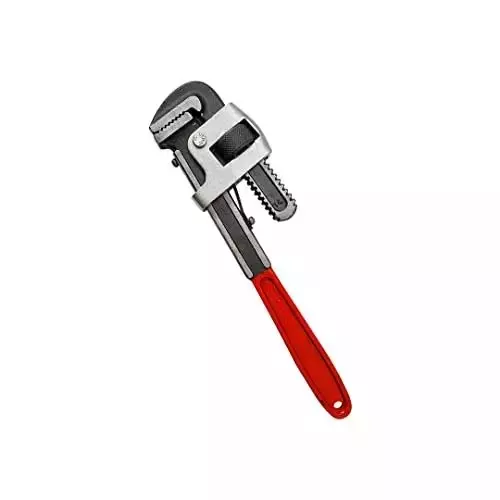Pipe Wrench: The Workhorse of Plumbing and Beyond

The pipe wrench, a seemingly simple tool, is a plumber's (and DIYer's) trusty companion. Its unassuming design hides a surprising amount of strength and versatility. Let's delve into the world of pipe wrenches, exploring their uses, different types, and how to get the most out of this essential tool.
Built to Grip:
Unlike most wrenches designed for nuts and bolts, pipe wrenches are specifically made to tackle rounded objects like pipes and fittings. Their key feature is a set of adjustable jaws with coarse teeth. These teeth dig into the pipe when pressure is applied, creating a strong grip that won't slip, even on rusty or stubborn connections.
More Than Just Pipes:
While their name suggests a singular purpose, pipe wrenches are surprisingly versatile. They can be used to:
-
Tighten and loosen threaded pipes and fittings. This is their primary function, making them essential for plumbing tasks like installing faucets or fixing leaks.
-
Grip rounded objects. Need to hold a rod or a cylindrical object for turning or cutting? A pipe wrench can provide a secure grip.
-
Break loose rusted or corroded fasteners. The strong grip of a pipe wrench can sometimes help break free a stubborn nut or bolt that other wrenches might struggle with.
Choosing Your Weapon:
Pipe wrenches come in various sizes, typically ranging from a compact 6 inches to a hefty 48 inches or more. The size you need depends on the job at hand. For most household plumbing tasks, a 10-inch or 12-inch wrench will suffice.
There are two main types of pipe wrenches:
-
Stillson wrench: This is the most common type, featuring an adjustable jaw with a screw mechanism.
-
Chain wrench: This wrench uses a chain that wraps around the pipe for a secure grip. It's ideal for use in confined spaces where a traditional pipe wrench wouldn't fit.
Using a Pipe Wrench Effectively:
Here are some tips for using your pipe wrench effectively:
-
Adjust the jaws to fit the pipe snugly. There shouldn't be excessive play, but you also don't want to crush the pipe.
-
Use the wrench on the non-moving part of the connection. It will help prevent damage to the threads.
-
Apply pressure with the heel of your palm, not your fingers. This will give you more leverage and control.
-
Don't use excessive force. If the connection won't budge, there might be a deeper issue, and forcing it could damage the pipes.
A Well-Maintained Friend:
Like any tool, a pipe wrench will perform better and last longer with proper care. Wipe it down after use to remove dirt and debris. If the jaws become dull, they can be sharpened with a metal file. Keep the adjustment screw well-lubricated for smooth operation.
If you are struggling to find good quality pipe wrenches that you need to buy in bulk, you can try Industrybuying.com and purchase great quality industrial products at budget-friendly prices.
The pipe wrench is a powerful and versatile tool that deserves a spot in every toolbox. With a little understanding and proper use, your pipe wrench can become a reliable companion for years to come.
- Art
- Causes
- Crafts
- Dance
- Drinks
- Film
- Fitness
- Food
- Games
- Gardening
- Health
- Home
- Literature
- Music
- Networking
- Other
- Party
- Religion
- Shopping
- Sports
- Theater
- Wellness
- Politics
- IT
- Relationship
- Blockchain
- NFT
- Crypto
- Fintech
- Automobile
- Faith
- Family
- Animals
- Travel
- Pets
- Coding
- Comedy
- Movie
- Game
- Computer


